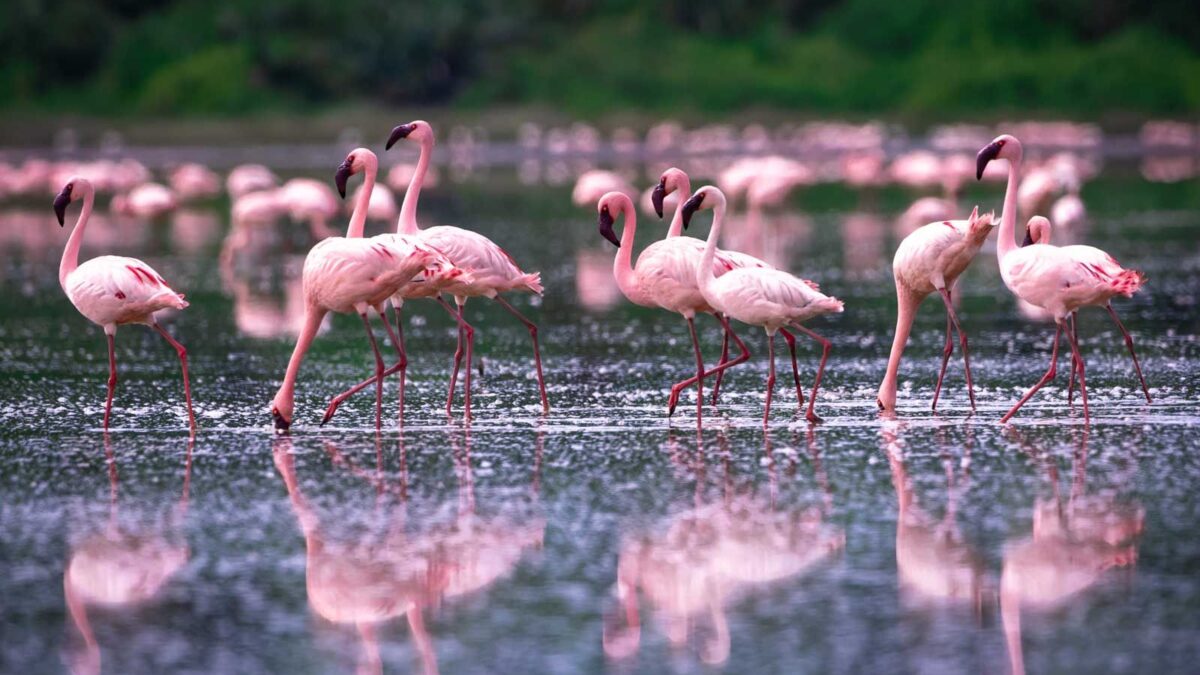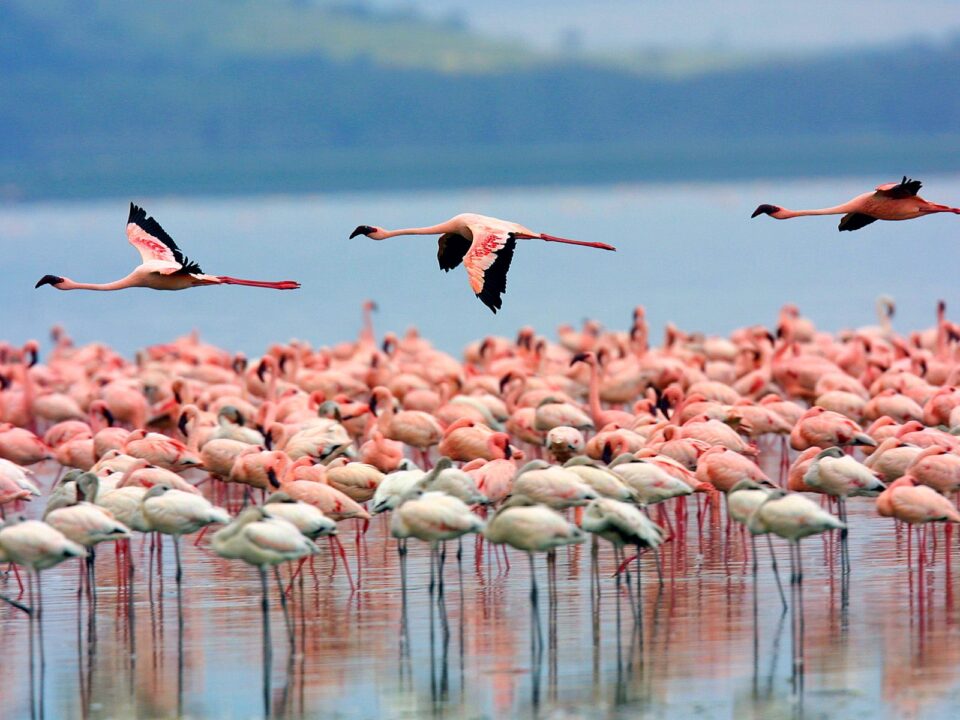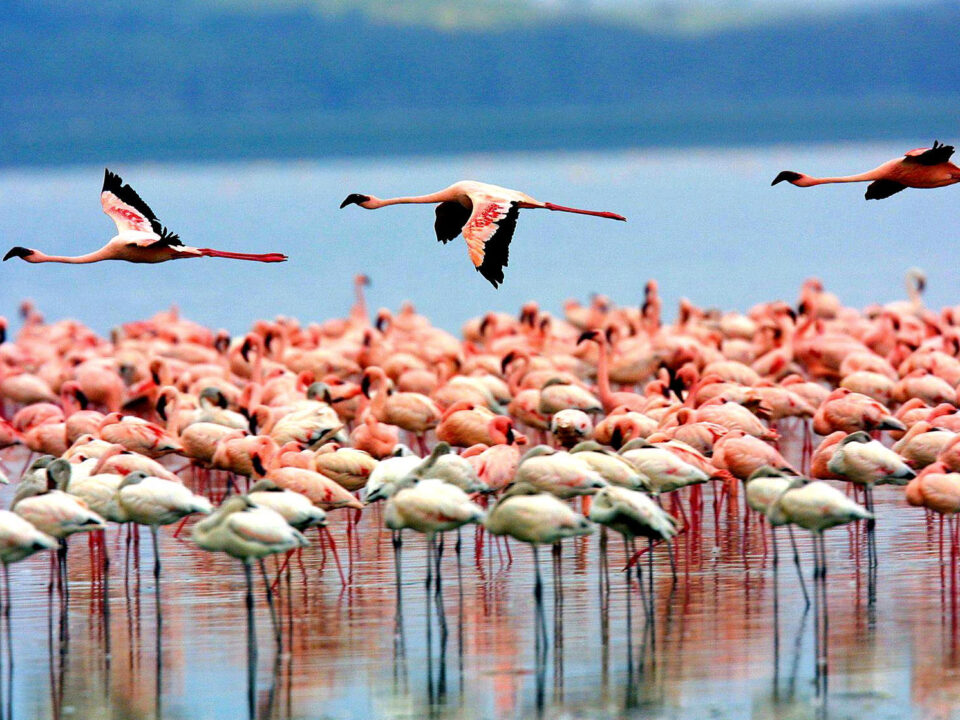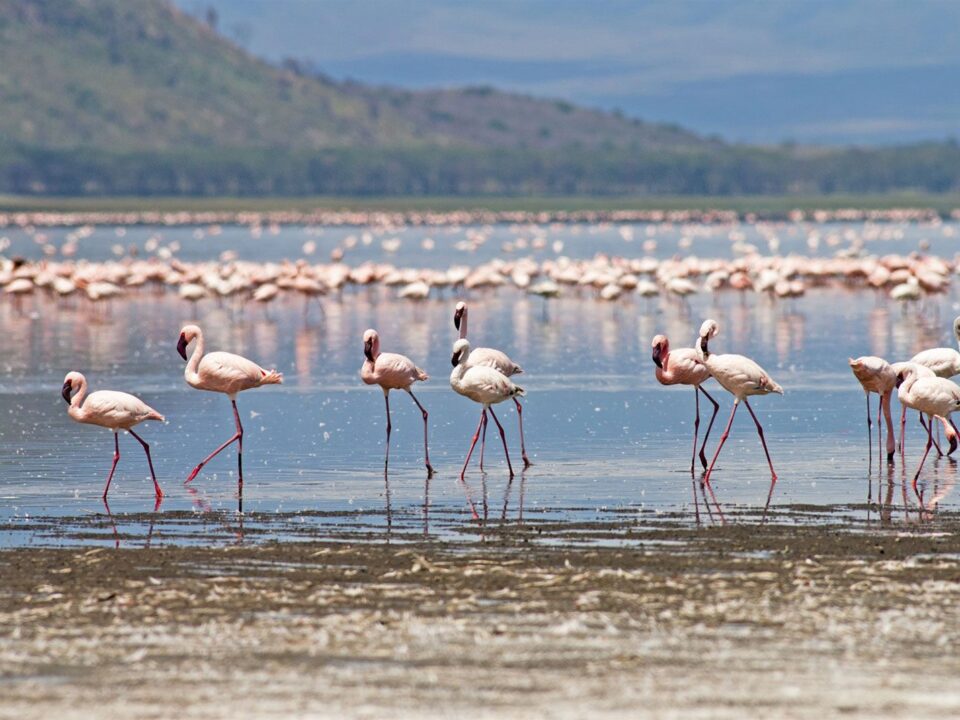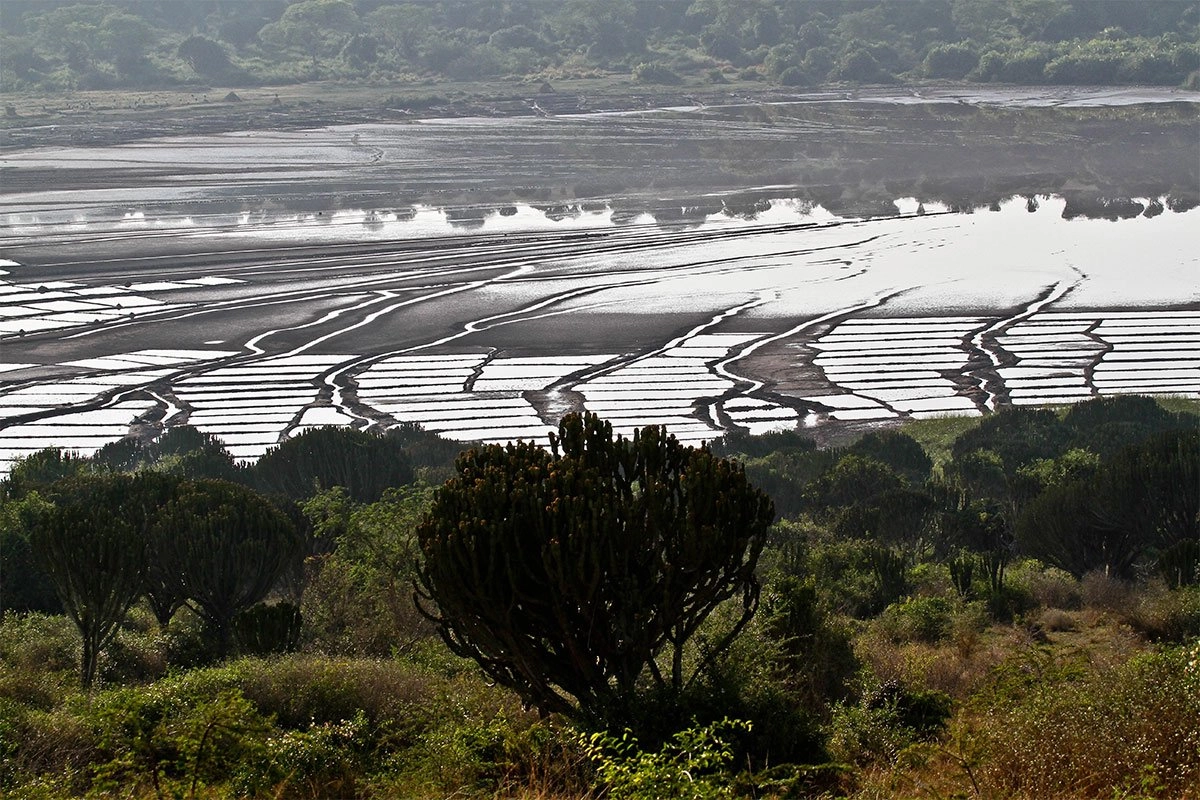
Lake Bunyampaka Flamingos and Salt Mining Tours
October 3, 2023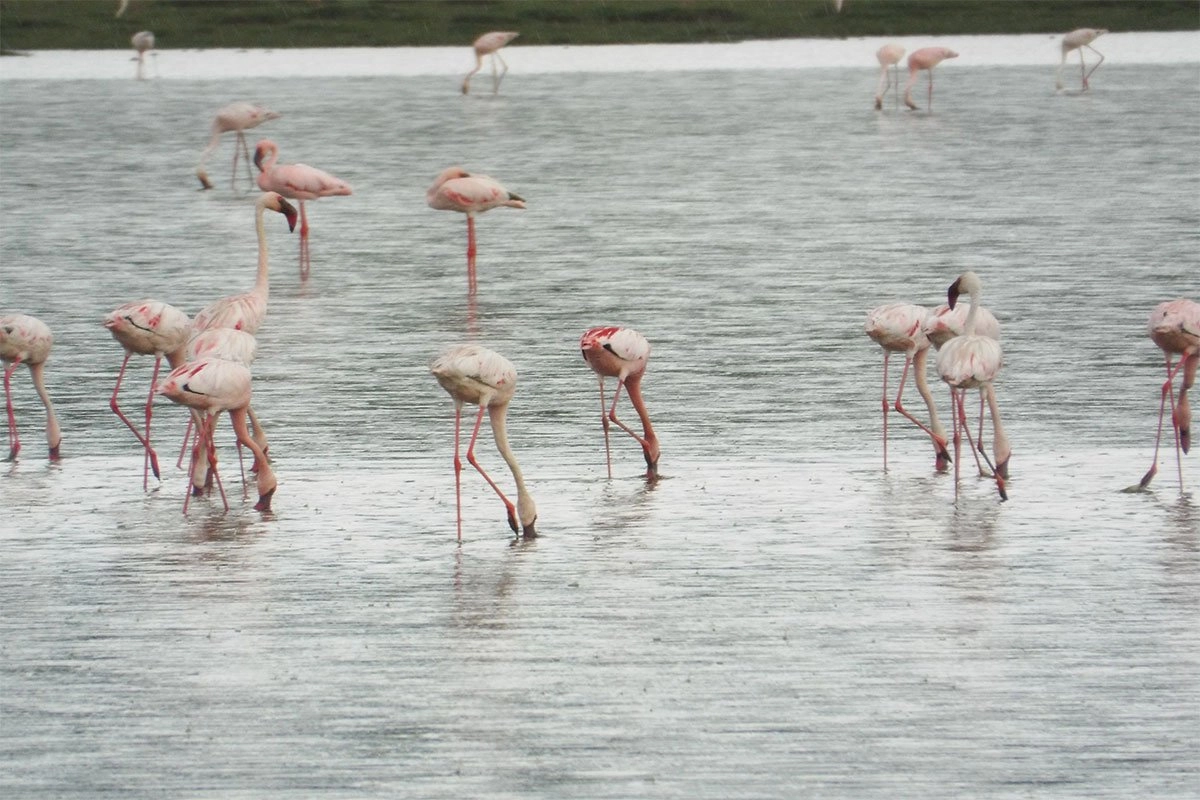
Lake Katwe Flamingos and Salt Mining Tours
October 3, 2023Lake Bagusa Flamingos and Salt Mining Tours – A Marvel of Queen Elizabeth National Park in Uganda
Prepare for an extraordinary journey into the heart of Queen Elizabeth National Park, where the enigmatic Lake Bagusa awaits your discovery. Nestled within this stunning national park and the adjacent wildlife reserve, Lake Bagusa is one of Uganda’s captivating alkaline lakes. This hidden gem not only offers breathtaking scenery but also plays a vital role in the park’s reputation as an exceptional birding destination.
The Avian Wonders of Lake Bagusa
Lake Bagusa stands as a testament to the remarkable avian diversity found within Queen Elizabeth National Park. It is a sanctuary for a multitude of bird species, contributing a total of 176 water birds to the tapestry of life in the park. These feathered inhabitants grace the expansive and explosive craters that characterize this area.
Embark on Birding Safaris in Queen Elizabeth National Park
For bird enthusiasts, Queen Elizabeth National Park is a paradise like no other, boasting an impressive roster of over 550 bird species. This exceptional diversity has firmly established the park as a cherished destination for avid birdwatchers.
Situated in the picturesque Rukungiri district of southwestern Uganda, the park encompasses a vast land area spanning 1,978 square kilometers. Its topography ranges from an elevation of 900 meters adjacent to Lake Edward to a towering 1,845 meters at the summit of the western Rift Valley’s eastern escarpment.
Within the embrace of the park, a mosaic of habitats unfolds, including lush moist semi-deciduous forests, meandering riverine bush-land, vibrant moist thickets, and thriving riparian forests. These ecosystems, in turn, provide sanctuary to a rich array of birdlife. Open woodlands, meandering rivers, expansive grasslands, and both seasonal and permanent swamps further enrich the park’s astonishing biodiversity.
The Spectacle of Aquatic Birds
As you venture into the park, the captivating Kazinga Channel will greet you with a dazzling display of aquatic birds. Witness the elegance of White-faced Whistling Ducks, the grace of Spur-winged Plovers, the striking beauty of Squacco Herons, and the majestic presence of Fish Eagles. Pink and White-backed Pelicans grace the waters alongside Long-tailed Cormorants, while African Jacanas confidently tread on floating vegetation. Yellow-backed Weavers craft their intricate nests, open-billed Storks search for aquatic prey, and Water Thick-knees stand sentinel along the channel’s shores. In this avian paradise, Pied Kingfishers dart above the surface, Wattled Plovers stroll along the banks, and the elusive Black Crake stealthily navigates the wetlands. Knob-billed Ducks add their charm to this mesmerizing avian ensemble.
Unveiling Prominent Species
Queen Elizabeth National Park is home to a constellation of prominent bird species. Encounter the resplendent malachite, the elusive black-ramped buttonquail, the melodious Collared Pranticles, and the vibrant papyrus canary. Keep an eye out for the regal Verreaux’s eagle-owl, the captivating black bee-eater, and the elegant squacco heron. The African fish eagle reigns over the waterways, while the swamp fly-catcher flits among the reeds. Long-tailed cormorants display their mastery of the aquatic realm, and the Martial Eagle soars in the sky. The park’s diverse landscapes harbor treasures such as the Black-rumped Buttonquail, the African Skimmer, the White-winged Tern, and the enchanting shoebill. Verreaux’s Eagle-owl, the Grey-headed Kingfisher, the striking papyrus gonolek, the melodious Papyrus Canary, and the elusive thin-tailed Nightjars complete this captivating avian tapestry. In the tranquil morning hours, their calls resonate, creating a symphony of nature that reverberates through the branches of the park.
Embark on an Adventure into the Verdant Gorge
For an immersive experience in the heart of the park’s lush landscapes, embark on a hike into the verdant gorge. Here, a diverse array of forest species awaits your discovery. Encounter the elegant Grey Woodpecker, the striking Black and African Emerald Cuckoos, the Hairy-breasted Barbet, the speckled Tinkerbird, and the resplendent Purple-headed Starling. Your journey may also lead you to the Green Hylia, creatures commonly seen within the enchanting Maramagambo forest.
In this pristine environment, the charming White-spotted Flufftail thrives within thickets by the river’s edge. As you explore the damp grasslands near the verdant gorge, listen intently for the far-reaching, metallic twinkle of the Broad-tailed Warbler—a sound that will forever resonate in your memories.
Best Time for Bird Watching in Queen Elizabeth National Park
To optimize your birdwatching safaris in Queen Elizabeth National Park, plan your visit between December and February. During this period, the park comes alive with avian activity, and a two- or three-day birdwatching expedition offers the opportunity to spot more than half of the 550 recorded species within this natural wonderland.
To embark on a truly unforgettable journey to visit Lake Bagusa’s flamingos and explore the salt mines in Queen Elizabeth National Park, contact Trek Africa Expeditions. Your comprehensive package includes transportation from the meeting to the departure point, the expertise of an English-speaking local driver/guide, luxurious accommodations, specified meals, park entrance fees, and a meticulously planned itinerary. Please note that international flights can be arranged upon request, and visa and personal insurance are not included. Additionally, personal expenses, drinks, tips, gratuities, and any items or activities not explicitly mentioned in the tour package are not covered. Prepare to be captivated by the avian wonders and natural beauty that await you in Queen Elizabeth National Park.

